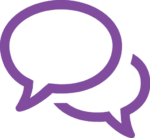
When was the last time you misinterpreted an email or had one of your messages misunderstood? It’s common for meaning to get lost in translation. After all, without the benefit of nonverbal cues, digital communication can often result in wider intent-impact gaps.
These days, conversing online has become the norm, especially in remote and hybrid work environments. Pumble found that 92% of organizations use email as their primary broadcast channel. According to Forbes, workers are spending an average of 20 hours a week using digital communication tools, and 60% of workers feel increased burnout as a result. These statistics beg the question – how can employees communicate more effectively across digital channels?
Digital Communication Pointers
At Emergenetics, we recognize that everyone has a distinct makeup of seven Thinking and Behavioral preferences. Understanding and honoring the innate preferences of colleagues will help to alleviate misalignment, leading to better exchanges of information and improved working relationships.
To accommodate the cognitive and behavioral inclinations of every team member, we recommend ensuring that messages connect to all seven Emergenetics Attributes, or what we call a WEapproach (“Whole Emergenetics” approach). In doing so, staff are more likely to understand and resonate with your essential points.
Use our seven pointers below to appeal to each Attribute.
 #1 Offer an executive summary
#1 Offer an executive summary
Analytical thinkers value efficiency and want to understand the bottom line. To honor this preference, get to the point by including an executive summary and any directives at the top of the message. Individuals with this preference will often go through information quickly, so ensure that you explain the essential facts and outcomes in a few words and include why the message or request matters.
 #2 Outline information in a numbered list
#2 Outline information in a numbered list
Those with a Structural preference want a well-organized message. To resonate with Thinkers with this preference, be sure to include a level of detail that provides helpful context. Any specifics you can offer about expectations and timelines will also be appreciated, as a Structural Thinker is absorbing the information through the lens of how. Also solicit clarifying questions at the end of your note, so they can seek out what might be missing from their perspective.
#3 Include a friendly greeting and sign-off
The Social Attribute works best when personal connections are made and the who, or the people involved, are appreciated. When writing, begin and end an email with an amicable greeting and sign-off. Ask colleagues how they are doing, cultivate personal connections by including your own personal anecdote. Social Thinkers also like to understand the impact of the message as it relates to others. If you’ve got an audience in mind for them to consider, be sure to depict who they are.
 #4 Utilize iconography, imagery or color
#4 Utilize iconography, imagery or color
Conceptual thinkers are energized by creatively contributing and are curious about the question of what if. To connect with Thinkers with this inclination, do your best to include colors, images or icons in written communication. Use metaphors and analogies to make your point meaningful to them. Separate information with header text to make the content easy to skim. Close out the email by tying the message to the big picture, so they can connect their personal impact to the whole.
 #5 Share input in multiple ways
#5 Share input in multiple ways
The Attribute of Expressiveness reveals whether people prefer to internally process their thoughts before sharing, externally process ideas, or fluctuate depending on the situation. To consider the spectrum of Expressiveness, strive to provide written information that requires feedback or input well before the deadline for those who are first-third Expressive. For those who are in the third-third, create an opportunity for them to share input “live” whether that’s through a face-to-face call or as part of a meeting.
 #6 Moderate the tone
#6 Moderate the tone
The Assertiveness spectrum includes first-thirds who are often amiable, third-thirds who are likely to drive things forward and second-thirds who may adopt either approach based on the circumstances. Recognize first-third Assertiveness by using a positive, persuasive tone to deliver information, and ensure that you clearly state the point and intention of the message to support third-third tendencies. Being kind in tone and clear in your messaging will better engage all employees across the Assertiveness spectrum.
 #7 Define what is firm and what is open to iteration
#7 Define what is firm and what is open to iteration
The Flexibility Attribute describes a continuum of behavior in which the first-third prefers to stay the course, the third-third prefers when options grow and the second-third, which may lean toward either style. When communicating about a change, provide sound reasoning behind the adjustments and communicate it as soon as possible to support first-third Flexibility. For those who are third-third Flexible, note what elements remain fluid.
Bonus Tip
One tactic that can help ensure you have spoken to each preference is to digitally highlight your message before it goes out. You can use the different colors of the Attributes, adding a Blue highlight to any Analytical points, a Green highlight to any Structural details, using Red for people-oriented elements and Yellow for exploratory concepts. A vibrant visual brings the message to life and can help to ensure it is complete and holistic. Just be sure to remove the highlights before you click send!
Being inclusive of all seven Emergenetics Attributes takes time, and it’s well worth the effort. Using the recommendations above will support you in crafting communications that are well-received and understood by any recipient. Just imagine how much more efficient, productive and pleasant work life will be when you take the guesswork out of your digital communications!
Learn why 87% of Emergenetics clients report that Emergenetics reduces miscommunication. Visit our website or fill out the form below to speak with one of our team members today!
 Print This Post
Print This Post

